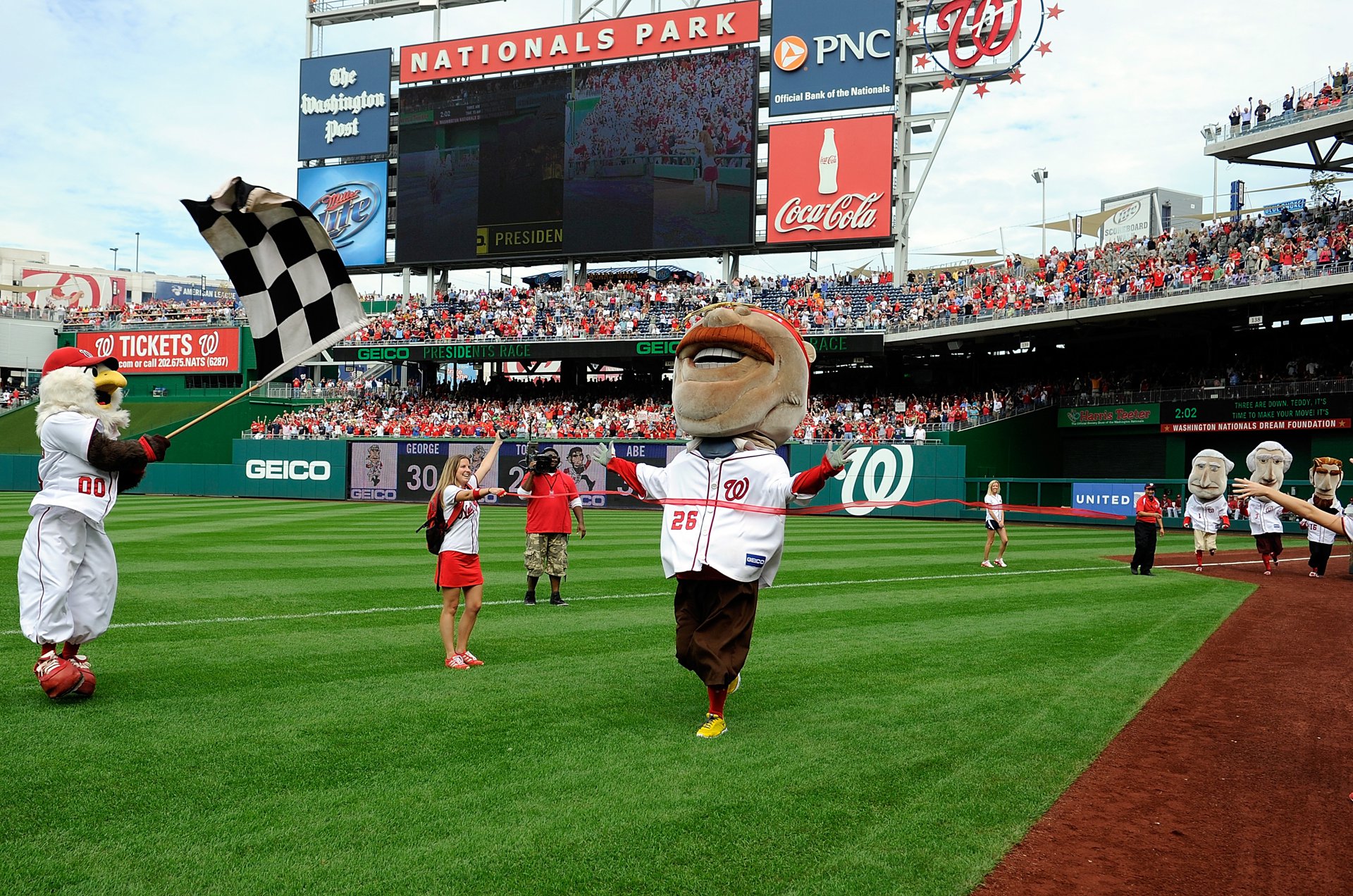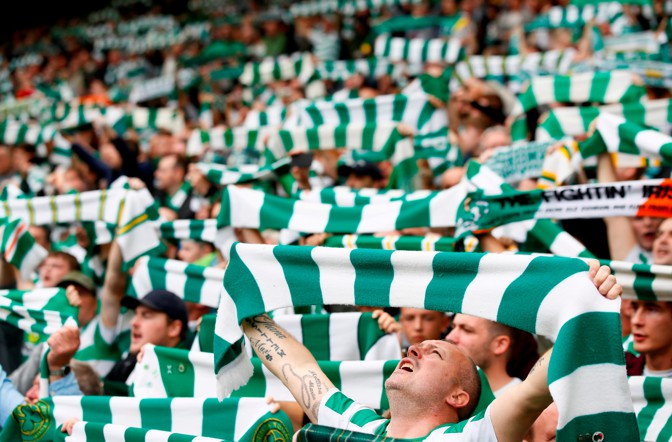
In sports, and in life, Europe and the United States see their societies differently—just not in the ways you might expect.

Memphis, Tennessee, is known for lots of things: Elvis Presley and B. B. King, the blues and barbecue. All these things, and more. But not Grizzly bears.
I did not think much of this while on holiday from London when my wife and I escaped the city’s steaming, unbearable heat to look through the Memphis Grizzlies’ (gloriously air-conditioned) fan store. The Grizzlies are the city’s professional basketball team. Their mascot is Griz the Grizzly Bear. Their crest is a Grizzly bear. It’s all about the bear.
Puzzlingly, in one corner of the store were shirts and other merchandise for a team called the Vancouver Grizzlies—one whose name made much more sense. In fact, the two teams were the same franchise, which in 2001 relocated 1,900 miles, across an international border and three time zones. Vancouver had not been able to support a professional basketball team, so the Grizzlies left for Tennessee. This is not unique in American sports—even in Tennessee. In 1997, American football’s Houston Oilers moved to Nashville, where they played, incongruously, as the Tennessee Oilers before becoming the Tennessee Titans. The most absurd example remains the Jazz: a perfect name for a basketball team from New Orleans, where it was based; less so from Utah, where it now resides.
As we returned to Britain, the annual soccer-transfer frenzy was reaching its usual fever pitch. Would Neymar Jr., the Brazilian superstar, move back to Barcelona from Paris Saint-Germain? How much would he cost—$200 million? More? At the same time, two small but famous clubs in England, Bury F.C. and Bolton Wanderers, were—like the Vancouver Grizzlies—facing the end of the road. They were losing money and could not find a buyer. Yet this did not mean relocating to a different city, but the prospect of bankruptcy and ejection. The contrast between American and European professional sports could not be more stark. In the United States, teams live on, just in a new location, and failure offers the opportunity for a reprieve. In the brutal world of European soccer, strength and success are rewarded, weakness punished.
In sports, the U.S. and Europe are different worlds, each revealing wider truths about the societies in which they operate—though perhaps not the ones the casual observer might assume.
Europe is oft-seen, and derided, across the Atlantic as America’s technocratic mother continent where collectivism and do-goodery reign. Yet it has developed a soccer model that is a form of hyper-capitalism, in which the strongest teams are businesses that live and die on their ability to win. Those at the top grab enormous amounts of prize money, allowing them to secure the best players on the best wages. The three highest-earning sports stars in the world this year are all soccer players: Lional Messi, Cristiano Ronaldo, and Neymar, who each earn more than $100 million a year.
In European soccer, there is no salary cap or overall spending cap; players are traded as commodities—literally forming a part of the business’s balance sheet. You “buy” players in Europe; you do not trade them. Those clubs that spend too much go bankrupt. Those that fail competitively, finishing in the bottom few positions in the league, are relegated, removed entirely from the top tier and forced to play with another, lower echelon before they prove themselves worthy of returning. (This holds true for Europe’s elite too. If they do not perform well enough, even for just one season, they cannot compete in the Continent’s preeminent competition: the Champions League, a contest open only to the teams that finish near the top of their domestic league.)
The United States, by contrast, holds a reputation in large parts of Europe as the epitome of winner-takes-all capitalism, yet it operates variants of a proto-socialist model for all of its major sports. Success is hailed, yet curtailed, and failure rewarded: The worst-placed teams get the first pick in the following season’s draft of new players, allowing them to restock on talent, a form of redistribution rejected elsewhere in the American economy. There is no relegation for those who finish last. Salary caps ensure something of a level playing field each year, and rules are collectively agreed upon by the franchises. There is even, in some cases, a salary floor to ensure that clubs remain competitive.
If American and European sports leagues were politicians, Europe would be Donald Trump, and the U.S. would be Bernie Sanders.
American sports are not so because they like socialism—they are simply taking the best path to making money.
“In the U.S., they figured out earlier that a league is more profitable if people work together,” Gabriele Marcotti, a senior soccer writer at the sports broadcaster and news site ESPN, told me. “League owners are business partners.”
While American sports are collectivist in structure—competition controlled, talent and money redistributed—they remain deeply, exceptionally American. Basketball, football, and baseball were created in the United States, designed for the United States, and packaged for the United States. They cater to American sensibilities—for television and commercial breaks, cheerleaders and half-time shows, and are designed to be consumed, competing not with other leagues offering the same product, but with Hollywood and prime-time TV.
That they should want to make money is also less controversial in the United States. The Chicago White Sox, for example, signed a contract in 2006 to change the start time of their baseball games to 7:11 p.m. as part of a sponsorship deal with the convenience-store chain 7-Eleven. In Europe this would be sacrilege.
Read: What the U.S. women’s soccer team needs more than equal pay
Fundamentally, U.S. sports reveal something that is as true in world affairs as anything else: American exceptionalism. The United States can—and does—do things in the world that others cannot. Its size, wealth, and geography simply make it so.
Look at how American sports were born. There were no other leagues to compete with—they were American sports, not global sports. This gave the organizers more control to shape the way the leagues were run than is the case in soccer, which is buffeted by worldwide, competitive forces. In sports, as in life, the U.S. is big enough and different enough to play its own games, by its own rules. The rest of the world cannot.
Soccer, Europe’s dominant sport, began in an amateur era and regards itself as more than entertainment: something communal, even tribal. Clubs were set up by churches or minority groups, to represent a class or interest, town or region, even political affiliation and religion. It’s not just about entertainment.
A quick visit to any country in Europe illustrates the point. In Glasgow, Scotland, the soccer club Celtic was founded by an Irish Catholic priest with the aim of raising money for a charity set up to alleviate poverty. Its city rivals, Rangers, founded by four brothers in the west end of the city, are traditionally Protestant. Today, Celtic remains the Catholic team—it plays in green and white, and the tricolor of Ireland, a Catholic country, is flown at its games. The Rangers play in blue, and U.K. flags are flown at their games. To wear one jersey or the other in Belfast, across the Irish Sea in Northern Ireland, is almost to indicate which sectarian tribe you belong to. One Catholic friend of mine who grew up in Belfast ruefully recalls the day when, as a child, playing with a Protestant friend, he was punched in the face outside a cinema by a boy in a Celtic top because he was wearing a Rangers tracksuit. His friend’s dad had given the boys the outfits—they were crazy about soccer and too young to care about the team colors.

There are countless other examples: Lazio in Rome is infamous for links to fascism and Mussolini. Livorno, 150 miles up the coast, was where the Italian Communist Party was founded, and its supporters have celebrated Joseph Stalin’s birthday. Russia has teams whose roots go back to divisions in the Soviet era: the people (Spartak), the police (Dynamo), and the army (CSKA). In Spain, clubs represent separatism, monarchy, or class. FC Barcelona’s motto—emblazoned on its stadium, the Camp Nou—is “Més que un club,” or “More than a club.” Despite its globalized brand, FC Barcelona remains a club owned by its supporters and a potent symbol of Catalan identity. In the Basque Country, Athletic Club Bilbao employs only players from the Basque region. Real Madrid—Royal Madrid—is the king’s team, complete with a royal crest (and controversial government financial dealings).
Perhaps the most striking example is from Austria. In 1909, two Austrian Zionists, Fritz “Beda” Löhner and Ignaz Herman Körner, founded the club Hakoah Vienna to raise funds for Zionism. Hakoah—the name means “strength” in Hebrew—won the Austrian championship in 1925, before touring the U.S. the following year, drawing enormous crowds. In New York City, the club played in front of more than 40,000 fans—the biggest crowd for a soccer game in the U.S. for decades to come.
To some extent, the notion that soccer is more than just a sport is a myth Europe tells itself—one based in some truth, but not the whole story. In England, for instance, successful early clubs in Preston, Sunderland, and Birmingham all spent wildly to bring in the best players, the soccer writer Jonathan Wilson told me. Today, soccer clubs’ jerseys are emblazoned with sponsors’ logos, while the owners of one team, Liverpool, are even trying to trademark the city’s name.
Still, Wilson says, there is a difference between the sporting traditions on either side of the Atlantic. “The idea of sport as a moneymaking tool, a part of the entertainment business, has always underlined U.S. sport,” Wilson said. “Whereas in Europe, there’s a sense of sport as part of the greater good.”
Before Memphis, my wife and I spent time in Atlanta. In the Inman Park neighborhood where we stayed, east of the city center, the red-and-black flag of Atlanta United FC was flown at house after house, as often as the Stars and Stripes, and more so even than the flag of the Atlanta Falcons, the city’s American football team. Atlanta United’s average attendance—more than 50,000—puts it at No. 10 in the global-attendance rankings, above some of Europe’s aristocratic giants, such as Italy’s Juventus, Inter Milan, and AC Milan. And yet, Atlanta United did not exist until 2014.
There are few, if any, equivalent stories in European soccer. In 2004, Wimbledon FC, a team from south London, was relocated to Milton Keynes, a town built in the decades after World War II. The move sparked national headlines and condemnation, and while the club, renamed MK Dons, has since established itself in the third tier of English football, with an average attendance of 9,000, it’s not at all on the scale of Atlanta United.
Even when well-established but middle-rung teams experience a sudden run of success here, they are disparaged by their more aristocratic brethren. Fans of Liverpool, a dominant club with a decades-long history of success, taunt its upstart rival Manchester City, bought by an Emirati organization in 2008, as lacking the same pedigree. “You can’t buy class,” they shout.

Of course, the United States is not averse to hierarchy and sporting birthright rooted in city and state, but this is reserved for college sports, another exclusively American concept, separate from—and, to some extent, more popular than—the pro leagues. In the American travel writer Paul Theroux’s book Deep South, he reflected on Alabama’s obsession with its dominant college football team, which plays its home games at the 101,821-person-capacity Bryant-Denny Stadium in Tuscaloosa—the eighth-largest sports field in the world and bigger than any soccer stadium in Europe. Game day in Alabama is a statewide event, Theroux wrote; cars carry the italicized A of the team on bumper stickers, and fans have the letter tattooed on their necks.
“That is a scenario where you have entrenched, historical superpowers,” Marcotti, the ESPN writer, told me of American college sports. “They are good every year, because they recruit the best players. They recruit the best players—and bear in mind they can’t pay them—because they throw other things at them: visibility and status and having great facilities and being in a great conference and being part of the tradition.”
In sports, the United States operates largely alone, unchallenged. Its sports, professional and amateur, reflect the society in which they have grown; largely separate, it can create its own rules and avoid competition from the rest of the world. Up to a point.
The U.S. is exceptional—but not entirely so. It may even be becoming less exceptional as the rest of the world becomes more American, and the U.S. becomes more like the rest of the world.
Take soccer. Hyper-capitalist competition, money, and commercialization have produced dynasties. The big five European soccer leagues—England, France, Germany, Spain, and Italy—are dominated by a small number of clubs, which are far richer than the rest. In Italy, Juventus has won the league eight times in a row. In Germany, Bayern the past seven. In France, Paris St. Germain has won six of the past seven.
But that is domestically. In the Champions League, no club has been able to dominate—Real Madrid is the only team ever to have won in successive years. In the past 15 years, the competition has been won by eight different teams.
And because simply participating in the Champions League is so lucrative, the giants of European soccer are now exploring ways to ensure that they cannot be easily eliminated from the competition by expanding it. “A step closer to the franchise model,” as Marcotti puts it. “The top 10 to 12 clubs, they aren’t professional clubs; they are playing a different sport. They are in the entertainment business.”
As with politics and culture, Europe is adapting to an American world, copying its successes and wealth. European soccer clubs are becoming American: franchises in a global entertainment industry, fueled by wealth pouring in from around the world. That makes European soccer a rival of its American competitors in the global entertainment market, with contracts to beam its product into the U.S. market.
American soccer, meanwhile, is still unable to compete with Europe—decades after its Major League Soccer championship was created, despite the wealth and growing popularity of soccer in the United States. Those struggles offer a lesson: The U.S. is exceptional in areas where it sets the rules, but less so elsewhere, when it must play by those devised by others. (Indeed, the MLS is showing signs of trying to adapt to the rest of the world, as Europe has adapted to the U.S.: The MLS’s salary cap now has a special loophole to allow American clubs to sign global superstars at much higher salaries.)
In Theroux’s book, he lamented the poverty and desperation of Alabama and Mississippi, Arkansas and South Carolina, likening them to the locales of his travels through sub-Saharan Africa and India. “Though America in its greatness is singular,” he wrote, “it resembles the rest of the world in its failures.”
Equally, the U.S. is singular in the sports it has created, but not in anyone else’s. Outside sports, for much of the past 30 years, the U.S. has been playing its own game—economically, militarily, and politically. But now, even in these realms, it is no longer purely an American game.
In sports, as in life, the world is becoming more American—and so America is becoming less exceptional.
https://www.theatlantic.com/international/archive/2019/09/us-europe-soccer-football/598012/



